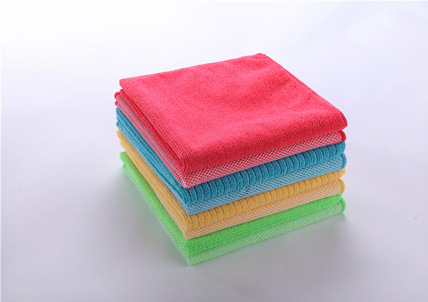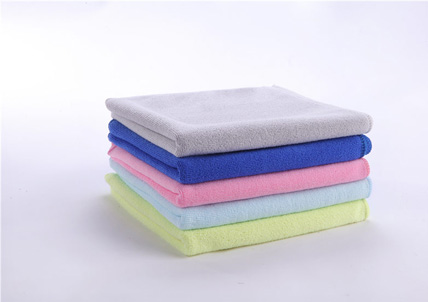Is Microfiber Towels Good for Hair?
Is Microfiber Towels Good for Hair?
Microfiber towels have become increasingly popular for hair care, touted for their gentleness and effectiveness in drying hair. But are they really better than traditional towels? In this article, we explore the benefits of microfiber towels for hair, how they work, and tips for using them to achieve the best results.
Benefits of Microfiber Towels for Hair
Microfiber towels offer several advantages over traditional cotton towels, especially when it comes to hair care. Here are some of the key benefits:
**Reduced Friction:** Microfiber towels are much softer and smoother than regular towels. This reduces friction when drying your hair, which can help prevent breakage, frizz, and split ends.
**Enhanced Absorption:** Microfiber is highly absorbent, capable of holding up to seven times its weight in water. This means it can effectively wick moisture away from your hair, reducing drying time without the need for excessive rubbing.
**Gentle on Hair:** The fine fibers of microfiber towels are gentle on hair cuticles, minimizing damage and maintaining the hair's natural texture and shine. This is particularly beneficial for those with curly, wavy, or delicate hair types.
**Lightweight and Quick-Drying:** Microfiber towels are lightweight and dry quickly, making them convenient for daily use and travel. They are also less bulky, taking up less space in your bathroom or suitcase.
How Do Microfiber Towels Work?
Microfiber towels are made from a blend of polyester and polyamide fibers, which are split into ultra-fine strands. These strands create a larger surface area compared to traditional fibers, allowing the towel to absorb more water and dry hair more efficiently.
**Absorption:** The microfibers create capillary action, drawing moisture away from the hair and into the towel. This process is much more efficient than the absorption capabilities of cotton towels.
**Gentleness:** The soft texture of microfiber towels helps reduce the rough handling of hair. Traditional towels can cause friction and lead to hair cuticle damage, while microfiber towels glide smoothly over the hair.
Using Microfiber Towels for Hair
To get the most out of your microfiber towel, follow these tips for drying your hair:
**Blot, Don’t Rub:** After washing your hair, gently blot it with the microfiber towel to remove excess water. Avoid rubbing, as this can cause frizz and damage to the hair cuticles.
The 12 top American interior designers you need to know
Top Benefits of Microfiber Cleaning Towel Rolls
How to Choose the Best Microfiber Cleaning Towel Roll?
4 Tips to Select the Perfect Microsuede Fabric Sale
4 Tips to Select the Best Microfiber Cleaning Products
What factors influence warp and weft knitting choices?
Unlocking Style: The Versatility of Diamond Cloth
**Wrap Method:** For longer hair, you can use the wrap method. Flip your head forward and place the towel at the nape of your neck. Twist the towel around your hair and secure it on top of your head. This helps absorb moisture while keeping your hair out of the way as you get ready.
**Leave It On:** Let the microfiber towel sit on your hair for about 10-15 minutes. This will help absorb most of the moisture without the need for excessive drying with a blow dryer.
**Air Dry or Blow Dry:** After using the microfiber towel, you can either let your hair air dry or use a blow dryer on a low heat setting. The reduced moisture will cut down on overall drying time, minimizing heat exposure.
Frequently Asked Questions
Can microfiber towels be used for all hair types?
Yes, microfiber towels are suitable for all hair types, including curly, wavy, straight, thick, and fine hair. They are especially beneficial for reducing frizz and preventing breakage.
How do I care for my microfiber towel?
To maintain the effectiveness of your microfiber towel, wash it regularly with mild detergent. Avoid using fabric softeners and bleach, as these can damage the fibers. Air dry or tumble dry on low heat to prevent shrinking and maintain softness.
Can I use a microfiber towel on wet hair?
Absolutely! Microfiber towels are designed to be used on wet hair. They are highly absorbent and can help remove excess water quickly and gently, reducing drying time.
Do microfiber towels cause static in hair?
No, microfiber towels typically do not cause static in hair. Their smooth texture helps minimize friction and static, leaving your hair smoother and more manageable.
Are there any downsides to using microfiber towels for hair?
Microfiber towels generally have very few downsides. The main consideration is ensuring you use a high-quality microfiber towel specifically designed for hair to get the best results. Cheaper options may not offer the same benefits.
In conclusion, microfiber towels are an excellent investment for hair care. Their gentle, highly absorbent nature makes them superior to traditional towels for reducing frizz, preventing breakage, and speeding up drying time. By incorporating a microfiber towel into your hair care routine, you can enjoy healthier, shinier, and more manageable hair.
Warp Knitting vs. Weft Knitting: Which Technique Reigns Supreme?
Warp Knitting Scrub Cloth vs. Traditional Scrub Cloth: Which Is Better?
Is Your Zigzag Scrubbing Mop Leaving Behind Streaks and Dirt?
Mops Hairdressing vs Traditional Cuts: Which Style Reigns Supreme?
Warp Knit vs Weft Knit: Key Differences Explained
Microsuede Fabric Sale: Top 5 Tips for the Best Deals!
Is Microsuede Fabric Eco-Friendly and Safe for My Family?
Related Articles





Comments